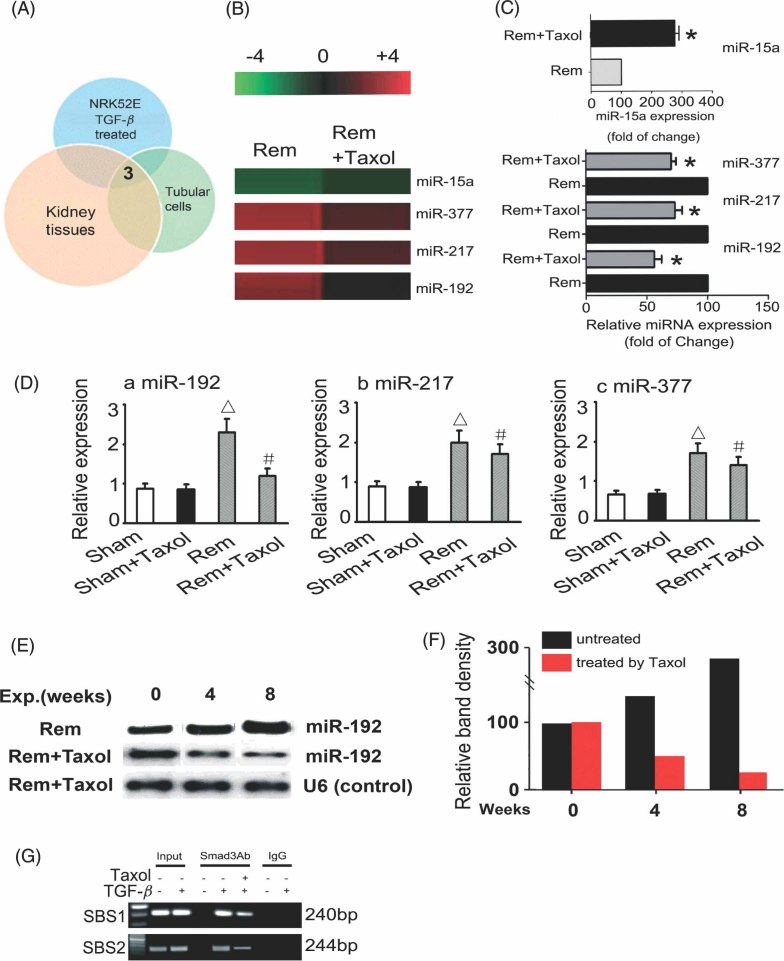Figure 5.
Expression of miRNA in the rat remnant kidney, isolated tubular cells and TGF-β1-treated NRK52E cells. (A) Comparative microarray analysis indicated that three miRNAs were up-regulated in all the samples. (B) Log2 values of each Rem + Taxol/Rem pair of miRNA microarray signals were displayed in a heat map generated by a TIGR multi-experiment; red indicates up-regulation, green down-regulation and black no change. The bar code (−4 to + 4) at the top represents the colour scale of the log2 values. (C) Bar graph indicating fold changes in the expression of miRNAs (miR-15a, miR-377, miR-217 and miR-192) in Rem + Taxol compared to that of the Rem group. Taxol treatment reduced the expression of three miRNAs, especially that of miR192, as assessed by microarray analyses. (D) Real-time PCR confirmed the increased miR-192, miR-217 and miR-337 expression in the rat remnant kidney; these expressions were significantly higher in Rem rats than in Sham animals (p < 0.05, n = 12), and the expression was notably reduced following Taxol treatment (p < 0.05, n = 12). No change was observed between the Sham and Sham + Taxol groups. (E) Northern blot analyses showed the time-course effect of Taxol on miR-192 expression levels in the kidney of the rat remnant model. miR-192 expression increased significantly at 4 and 8 weeks following surgery and was substantially reduced with Taxol treatment. (F) Densitometry analyses of northern blots from six independent experiments; each bar represents mean ± SEM for 12 animals. *p < 0.05 versus Rem group; Δp < 0.05 versus Sham group; #p < 0.05 versus Rem group (n = 12). (G) ChIP assays for Smad3 were performed with chromatin material isolated from NRK52E cells treated with TGF-β1. Precipitated DNA was amplified with oligonucleotides spanning regions of the potential Smad binding sites 1 and 2 (SBS1 and SBS2); total inputs are indicated. The antibody against Smad3 immunoprecipitated the DNA fragments from NRK52E cells containing the potential SBS1 and SBS2, and their bindings were suppressed by Taxol

